Who does not know peonies? Peonies are a perennial plant. These large burgundy, pink, white, yellow flowers are painted in almost every garden. The peony flower shape varies depending on the variety: it can be lush or similar to sockets, simple or terry. Peonies perennial possess a rich, strongly pronounced spectrum of flavors, unusually enjoyable to smell.
Huge buds bloom in May-June and look simply luxuriously against the background of their own openwork green leaves. Lush bright flowering in one variety usually lasts 2-3 weeks, but different varieties bloom at different times. Therefore, if there is a well-chosen collection of peonies, a well-chosen collection of peonies, bloom can be admired until 3 months in a row. From May holidays until the last decade of July, the garden will be filled with bright colors.
Perennial Flowers Peonies grow up to 60-80 cm in the height and caring owner pleased with their beautiful blossoms for several years in a row. With proper agricultural engineering and competent care, peonies will grow more than 20 years in one place, every year she giving them around the magnificent view. It is easy to grow, because peonies are an unpretentious plant that does not require any particular concerns. So, peonies are perennial, how to properly make landing and care.
Landing peonies Perennial
Peonents breed vegetatively: stems and root cuttings, renewal kidneys, tanks, dividing the bush. If you want pions of perennial to buy seeds, then risk getting too diverse and not equalized plants.
Division of the bush of peonies perennial
Most often, the traditional method is chosen for breeding peonies - the division of the bush. It is better to carry this procedure of the plant 3, 4 years, even better than 5-6-year-old bushes. The most favorable time for landing is the end of summer - the beginning of the autumn (from mid-August to mid-September). Some make the peonies falling in the spring, but these plants have less chances for survival. The autumn transplant is beneficial to the fact that it is already getting hot time, rains are increasingly watered with the land, and the root system is strongly strengthened due to the rustling of new roots.
Choosing a place to plant peonies Perennial
To disembark bushes, you need to choose an open, sunny place. It is extremely important that the sun rays covered the future flower bed at least 6 hours a day. However, it is not worth placing flowers and on the south side, where the petals can quickly burn, and the bloom itself will be noticeably shorter.
Pionary can be in principle to be placed on any soil, but the most appropriate are considered clean and aligned loams. You should not land colors in wetlands and unnecessarily raw soils. The groundwater level should be located at a depth of 50-70 cm from the surface. If the selected location is suitable in all respects, but it is a corner that rises above, you can lift the pionary or create a separate drainage system around it. Otherwise, the gardener may face the root system and the subsequent feast of the plants.
Also when choosing a plot, pay attention to the location of the nearest shrubs or trees. It is desirable that flowers with large decorative plants divided several meters: the peonies need freedom and an abundance of nutrients and moisture that shrubs and trees can delay. The place must be protected from the busting of the winds.
Preparation of pit for planting pions pions
- For 3-4 weeks before the start of the work, you need to dig a shallow pit (by 1.5 bayonet shovels). The best layout of the holes is at a distance of 80-100 cm from each other, a diameter of 55-70 cm.
- The pit needs to be filled with a 2/3 pre-prepared mixture of compost, peat, reworked by manure in equal amounts with the addition of 150 g of potassium sulphate, 200 g of superphosphate, 350 g of bone flour.
- In clay soil, you can add about 150-170 g crushed lime figs. The mixture is stirred with a dug layer of the Earth, poured into the pit and tram.
- By the time the landing, it will fall, and you get half the pits of the finished nutritional mixture, which will be enough for the full growth and development of the bush.
Preparation of root peonies pions
- Pre-stalks are cut into a height of up to 10 cm. To make it easily digging the adult bush, it is better to pre-bind the trunk with stems. The root system of peony is very powerful and can go deep into 80 cm. The roots are widely expanded and on the parties. Digging the rhizomes need very carefully to not break them. The best tool for coppes - garden forks. First, the bush is pumped up with a circle in a circle to a greater depth, and then with the help of two bayonet shovel, it can be carefully pulled out of the ground.
- Rhizomes should gently wash with water to remove the nanile ground. After that, it must be put in the shadow for 5-6 hours to grasp. It will make the roots more plastic. Stems need to trim at a distance of 10 cm above the roots.
- The following task is the division of the bush. First, the bush is divided into 2 halves, then each part is 2 half again. Initially, you need not to cut roots, but try to disconnect them in places of jumpers. Many for this use wooden pegs and hammer. Then, with a sharp knife or garden scissors, the rhizome is divided into pieces of 15 to 30 cm. On each part there should be a small amount of apparent roots with 3-4 kidneys. Discover or very small roots should be removed. As a result, a qualitative decene with 1-2 high-quality roots and several kidneys is formed.
- Before boarding, the sliced \u200b\u200broots should be put into a solution of manganese (prepared at the rate of 3 g of water). It will save the billet from the root rot. After that, the location of the cuts on the roots can be sprinkled with crowded coal and put the prepared trimming of the root in the shade per day for a pear.
- Immediately before landing, the roots can be dipped into the heteroacexin solution, which provides plants with good survival rate. To prepare in 10 liters of water, 2 tablets of heteroaceksin, 50 g of copper sulfate, clay are added. Everything needs to be stirred until the mixture becomes a pasty. Once again we drip rhizomes and remove the remains of the stems.
Disembarking rowing pions
Rhizomes in the pit need to plant in such a way that the kidney of the resumption to go into the ground by 3-4 cm on loams and 5-6 cm when placing a bush on sandstones. You don't need to rub the soil around the landed bush. Top view of the skewers are sprinkled with garden earth with peat mulch depth of 5 cm. Immediately after disembarking, peonies are abundantly shed.
For the next year, a year waiting for flowers from transplanted plants is not yet. However, then for many years they will delight those around the abundance of buds, which will begin to bloom in mid-May.
Ponition reproduction with many years of chain
- So usually deteriorates herbaceous varieties. For this, 2 - 3 times the shoots as they grow to inhibit fertile soil by 30 cm. Buds are pouring.
- In summer, they take care of the uterine bushes. It should be monitored that the hopping layer does not follow.
- Facing and moisturizing ensure the development of converting roots and vegetative and flowering kidneys, of which the next year in the uterine plant will develop shoots.
- By the end of the summer, developed thin roots will appear on the desired stems. Soothes with roots should be cut in such a way as not to damage the kidneys.
- Cut shoots are planted on a fertilous pre-ridge with fertile soil. After irrigation - mulch. Before the winter onset, the cuttings are insulated with peat or straw. At a permanent place, planting material can be planted after 1-2 years.
Ponition reproduction with long-term cuttings
Rare varieties breed cuttings. With five-year plants, you can prepare up to 15 cuttings. With older bushes per year, about 35 cuttings can be obtained.
- The hauling is made over a half or two weeks before the start of flowering until the first half of June. The cuttings from the middle part of the stem root better. Each cutlets must have 2 interstices. From above, the stem is cut into 2 cm above the top sheet, below - under a sheet pillow.
- Cut material can be treated with such growth substances as heteroacexin or indolylmalassic acid. For example, in a solution of 100 mg of heteroacexin on 10 liters of water, the cuttings can be withstanding up to 8 hours, in a solution of 100 mg of the preparation on 1 liter of water, there will be enough two hours.
- The cuttings are planted on the prepared ridges or in a cold greenhouse. The soil is sprinkled with sand or perlite by 6 to 7 cm. The surface is aligned, slightly seal and watered. The cuttings are sazing obliquely with a peg on a depth of 3 - 4 cm. The distance between the landings should be at least 7 cm.
- After planting cuttings, peonies spray with water and covered with polyethylene. The first two weeks to spray the cuttings 3 - 4 times a day. The air temperature inside should be saved within 25 ° C. After 40 days, landing can be started. After 2 months, the roots and vegetative kidney begin to develop.
- At night when cooling the plant must be stolen. In the fall, the beginning to develop plants are mulched by 5 - 6 cm by humus, peat or peat apart. During the frosts, it is necessary to put the insulation with a layer of 15-20 cm. You can use leaves, trust, straw or chips as insulation.
Perennial Pionics
During the first two years of additional feeding from the Pionary owner, it is not required - a developing plant will be sufficiently initially made fertilizers. Watering, weeding, soil loosening is the only thing that will be required to your peon coast.
- Swimming should be carried out particularly carefully: the root system of the bush is very fragile and partially located at the surface. The depth of loosenings - up to 5 - 7 cm, a diameter of the bush - up to 15 cm. Better to loosen the soil after the rain or watering, which will exclude the formation of the crust, and around the plant will create an aimed mulching layer.
- Watering is especially important during the actual growth of peonies and bootonization - at the beginning of summer. It is enough to water the bushes for about once a week, pouring under each bush at 25 - 40 liters of water. During the heat, it is important to carry out additional watering (sometimes even daily) is required).
- An important role is played by timely weeding not only to preserve the appearance of the flower, but also for its development. Some gardeners during the flowering period leave one stronger and large bud on the blur. Little buds are cleaned not to interfere with it to develop. In this case, the large bud will remain fairly juice to show a powerful beautiful flower. In some cases, the developing bud may require even the support of the support. But even if you are a lover of a multi-fission, during the flowering period you need to remove immediately and flashing buds immediately: it will improve the appearance of the bush.
- When the peon bushes reach a revered age of 7-10 years, you need to send them or update the bushes. To do this, it is necessary to neatly dig a plant and divided into several strong healthy parts, for each leaving 3-4 roots in length not more than 15 cm.
Fertilizer pions pions
Begin to fertilize peonies you need for the third year after disembarking. For one season you need to spend 3 feeders:
- The first is early spring nitrogen-potassium. It is held immediately after the snow cover. It is necessary to scatter 10-15 g of nitrogen and 10-15 g of potassium around the bush. It should be trying to scatter fertilizer so that it only falls on the soil, do not hurt the stalks of the bush.
- The second is carried out during the bootonization of the plant. Nitrogen, potassium, phosphorus are entered in an amount of 10 g, 12 g, 15 g, respectively.
- The third feeder must be carried out 2 weeks after flowering for stimulating renewal renal formation. Kalievo-phosphoric fertilizers are made at the rate of 12g and 20g, respectively.
Prevention from pionery diseases
Prevention from gray rot should be carried out in April. Around the coland of the soil at the very base of the stems are powder. In the subsequent period, after the rustling, 2-3 times it is enough to treat fungicides.
Perennial Peonies - Varieties
Herbaceous and tree peonies today have many varieties and each season the number of new beautiful hybrids increases.
The most popular from domestic gardeners are varieties:
- Altai news
- Cruiser Aurora,
- Maxim Festival
- Corina Versane,
- Peony yellow, white and pink,
- Sarah Bernard,
- Mercedes,
- Pink raidians
- Albert Crussia
- Longfello
- MONBLAN,
- Eugene Vardier,
- Clemanceo,
- Philippe Revuar
- Anshantress
- Nickname peony and many others.
Each region has its local selection varieties, more adapted to the local climate.


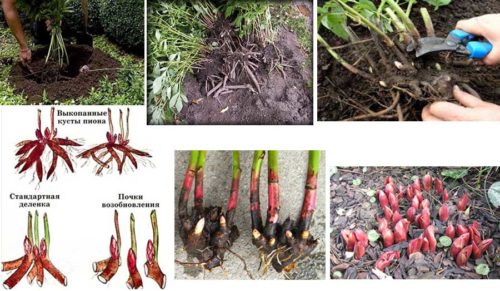
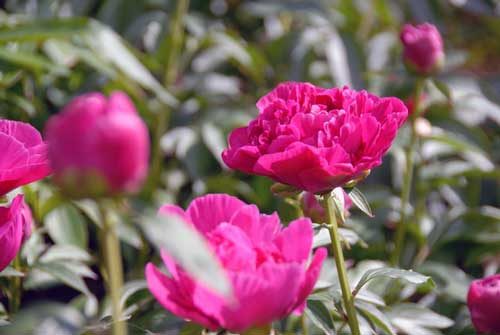
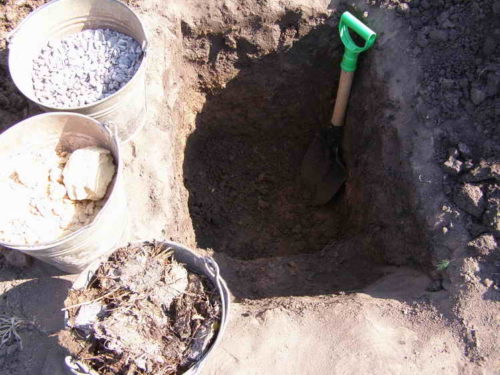
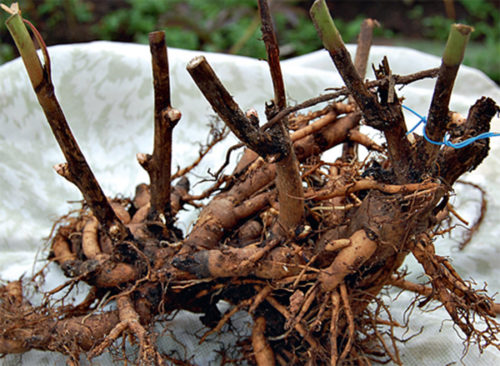
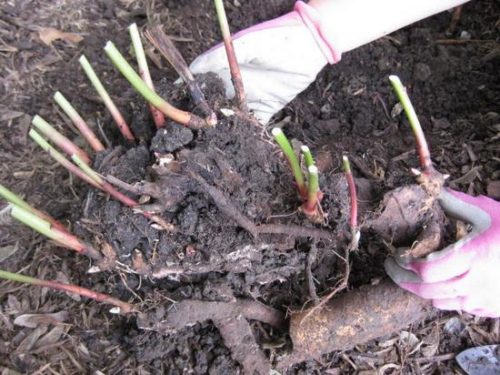
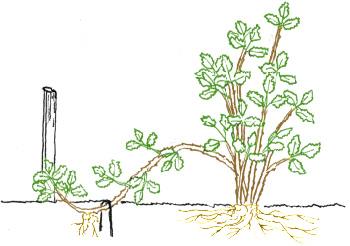
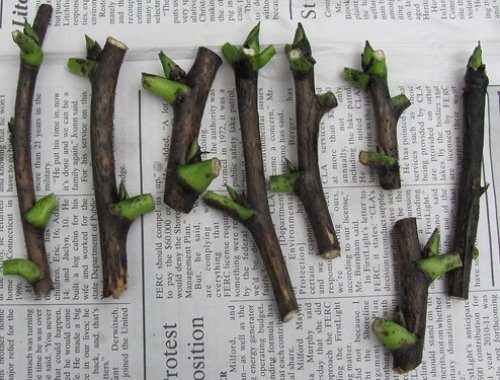

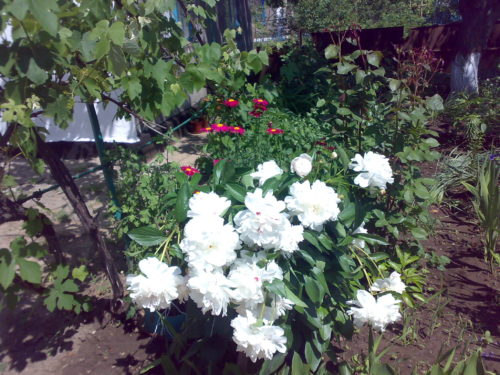
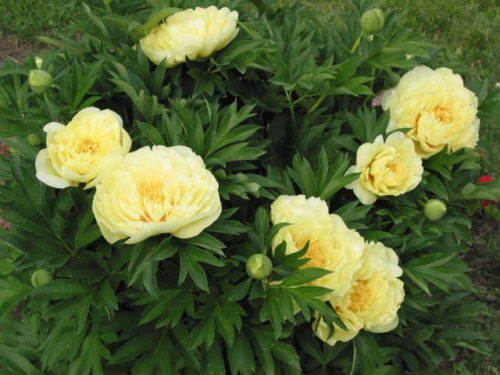
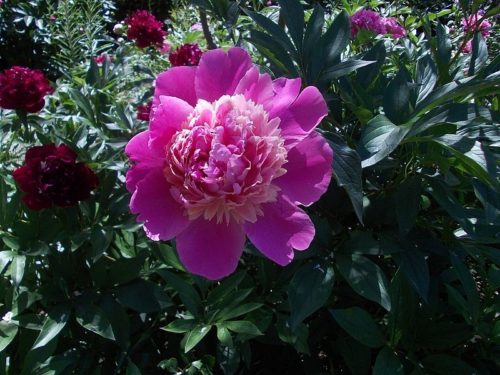
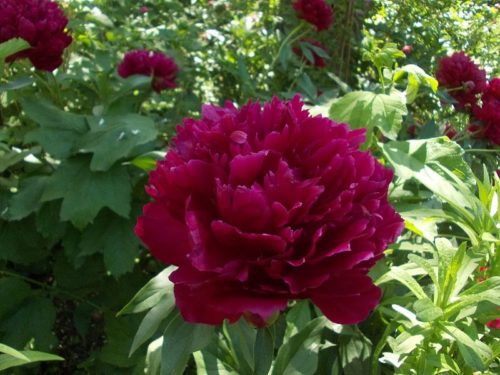

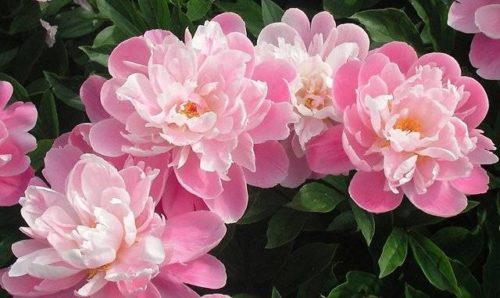
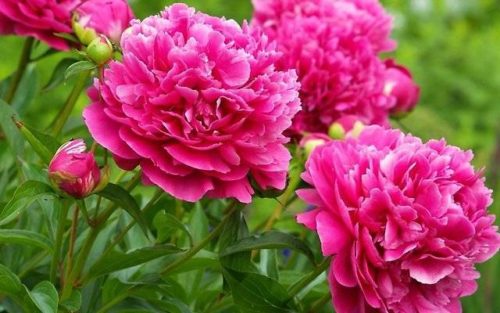
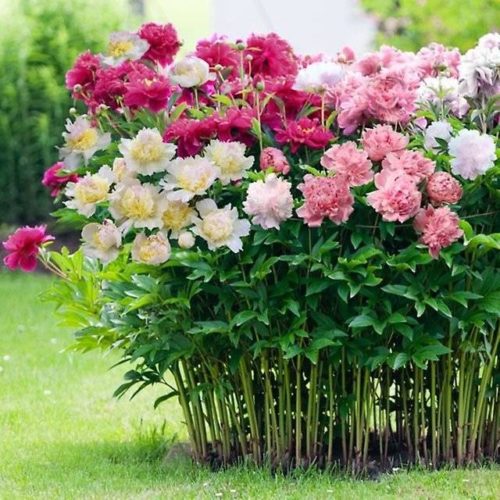
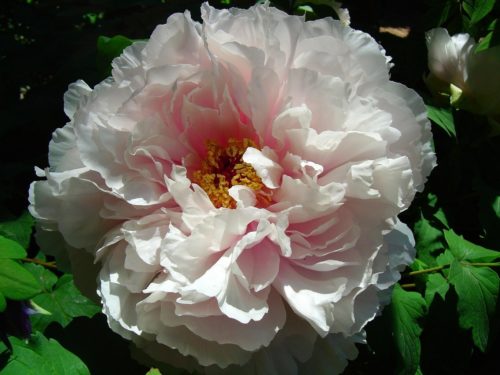
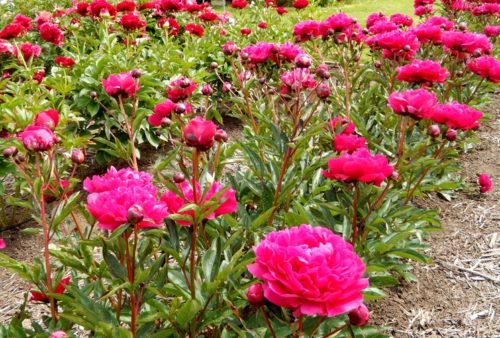
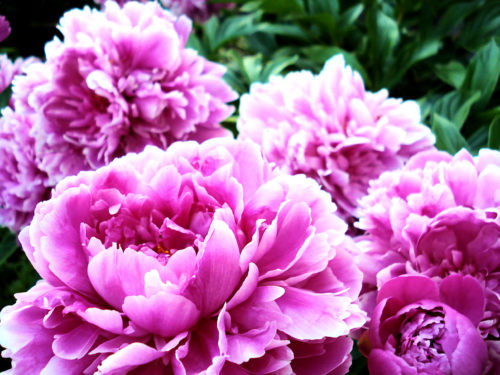
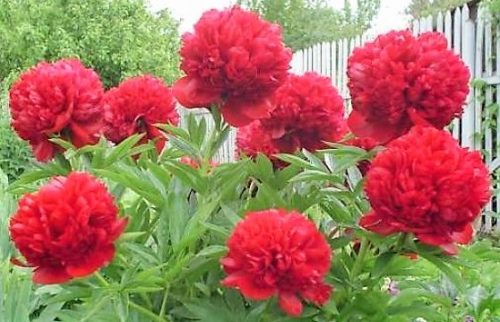
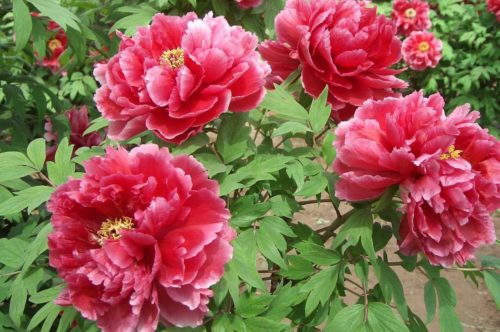
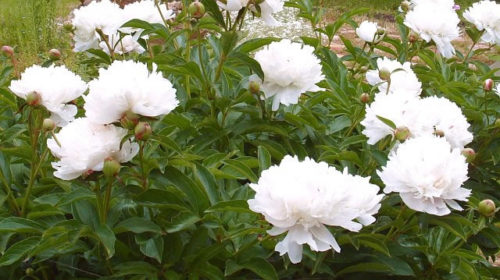

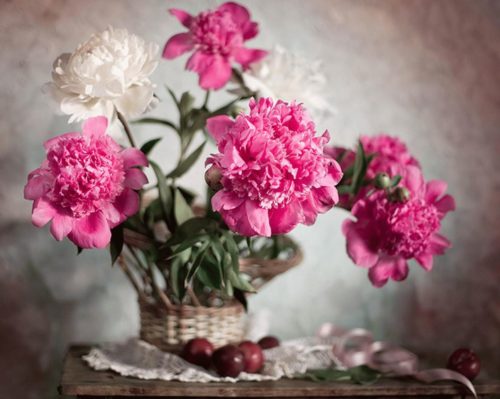












 Start a discussion ...
Start a discussion ...